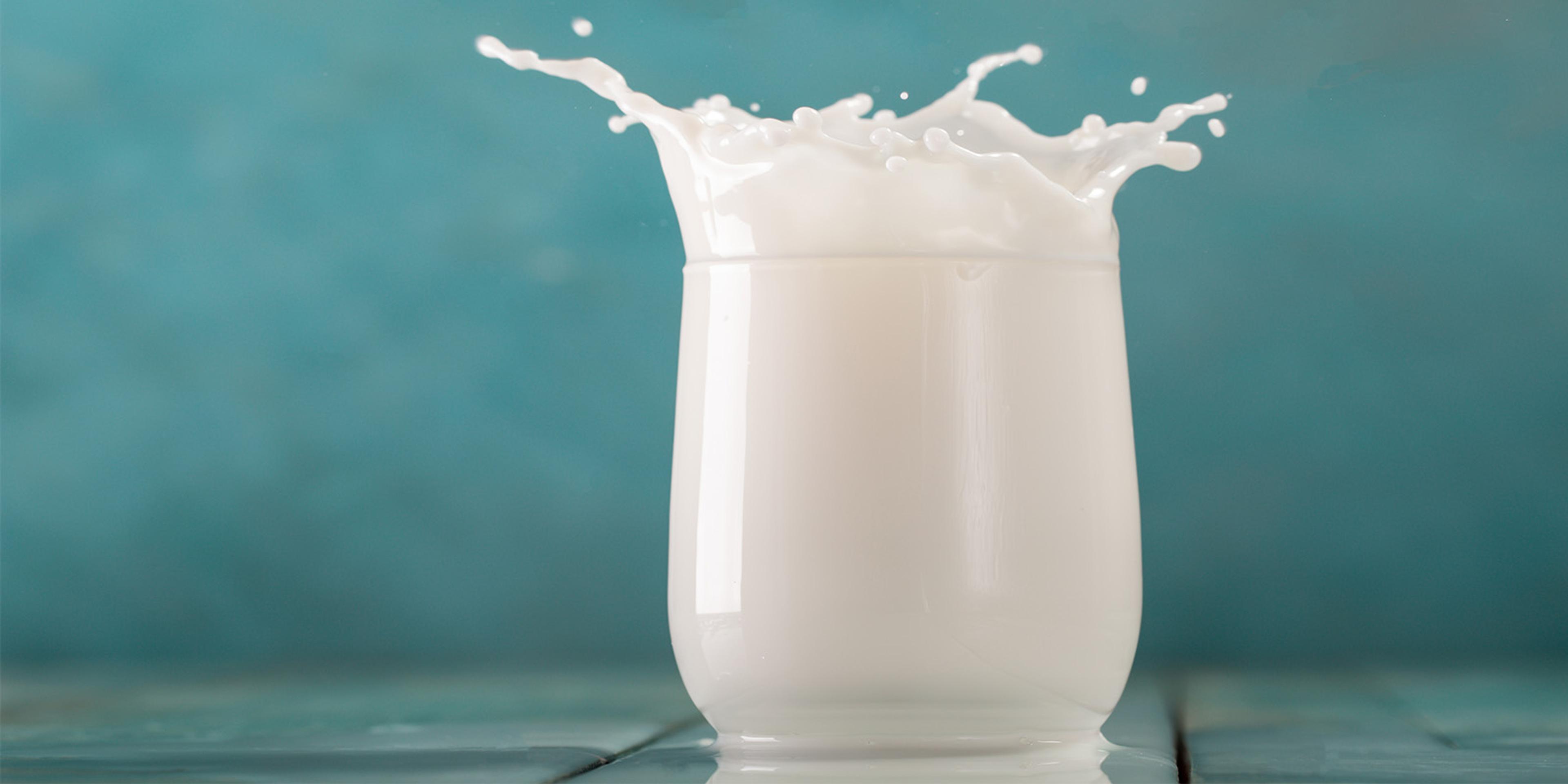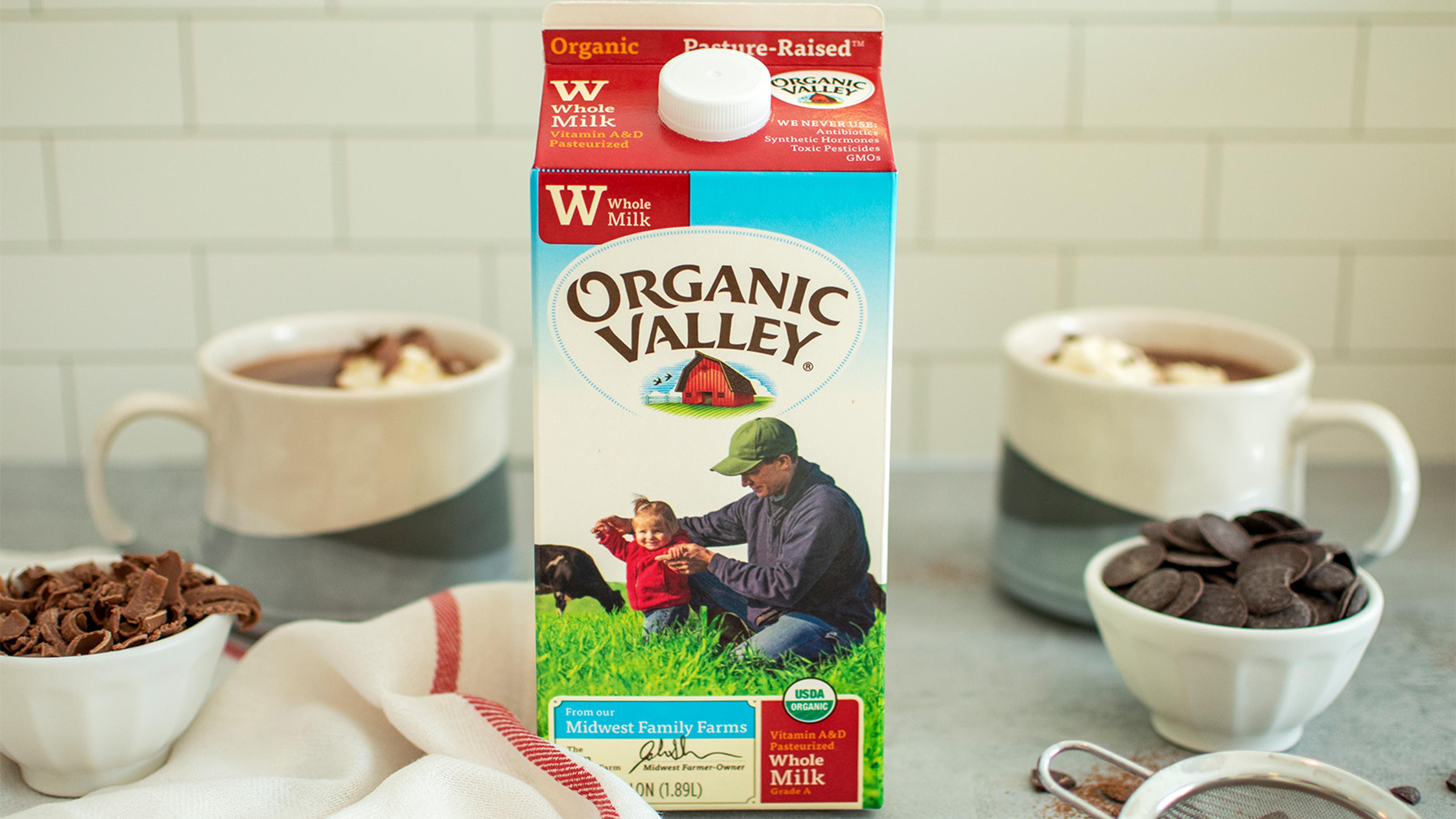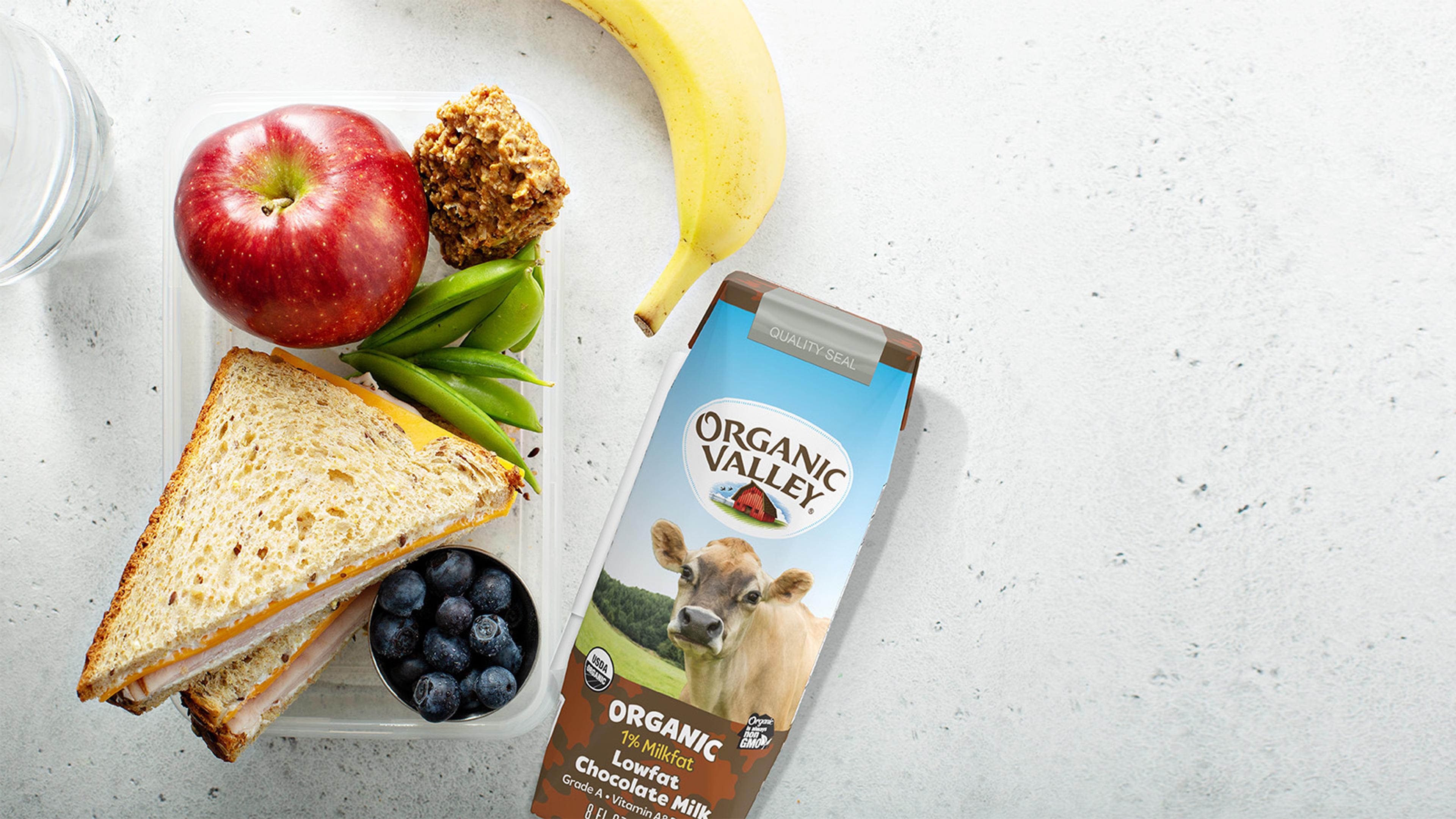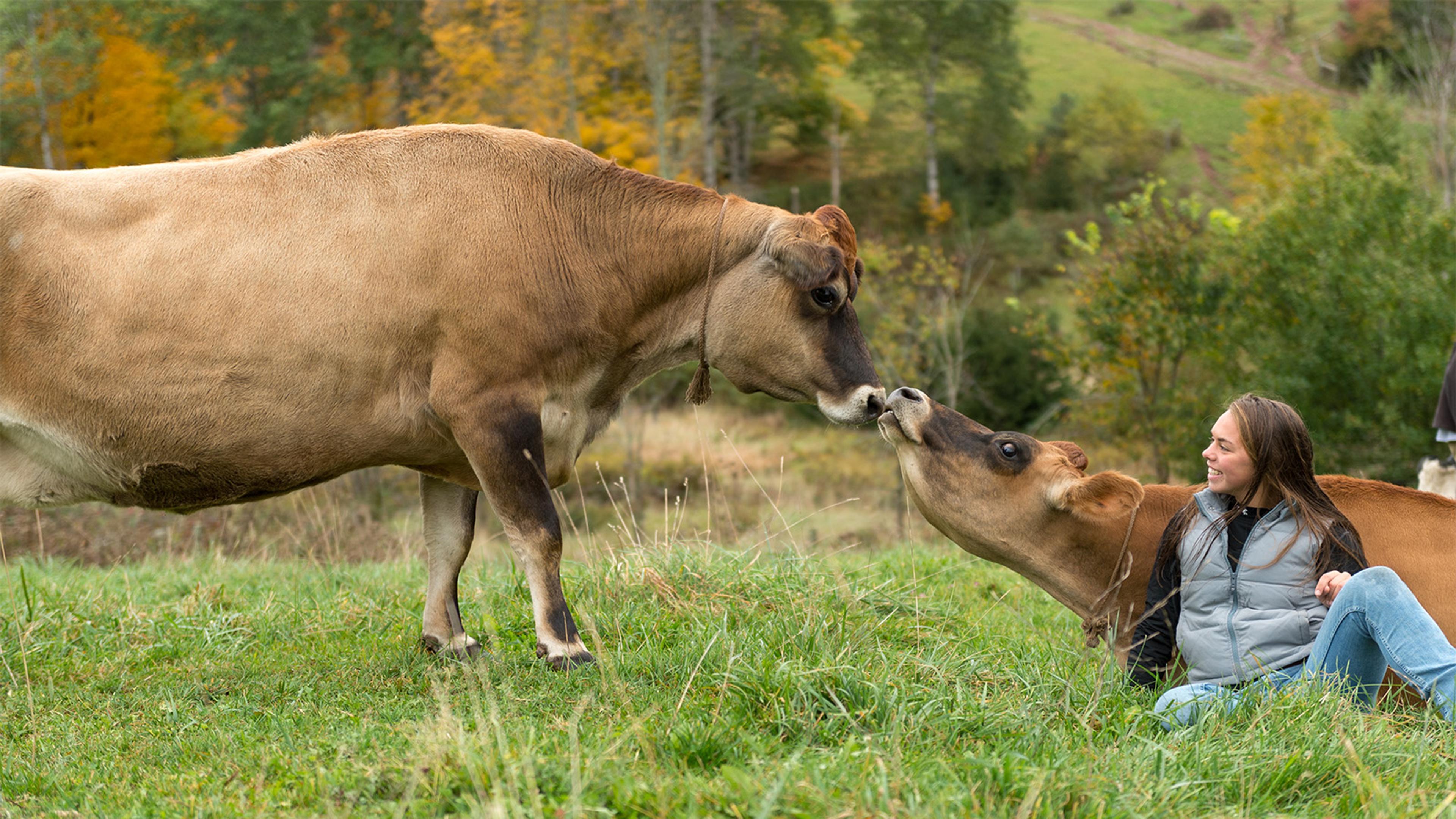
Food
How Much Water Is Added to Milk?
There are many types of milk in the store — 1%, 2%, skim milk, whole milk, the list goes on. You might have even heard someone refer to skim milk as “watered-down milk.” But is this true? Does adding water to 2% milk make it skim? Does adding water to whole milk make it 2% milk?
There’s a lot of confusion and misinformation out there about what the process is regarding how much water is in milk and if water is added to achieve certain percentages of fat. While milk naturally contains some water, the way farmers “make” the varieties is different than you might think.
Does Milk Contain Added Water?
Is there water in milk? Of course! Milk contains about 87% water naturally. But do farmers add more water? Absolutely not! In fact, it’s illegal to do so.
Milk with added water is considered an “adulterated product” and can’t be sold, said Clay Detlefsen, National Milk Producers Federation senior vice president of regulatory and environmental affairs.
State authorities and the U.S. Food and Drug Administration would take enforcement actions against someone who adds water to cows’ milk, Detlefsen said. Federal and state authorities would see that as a major offense, he added.
In fact, milk is highly regulated and must adhere to a “standard of identity.” This means that milk must meet certain conditions before it can be considered “milk” and sold as such to consumers. Standard of identity requirements in the FDA code include the following:
- Milk that is ready to be sold needs to be pasteurized or ultra-pasteurized.
- Whole milk must contain 8.25% milk solids (besides fat) and at least 3.25% milkfat.
- To “create” types of milk, components of milk such as milkfat, skim milk, and/or milk solids are combined to create a milk with the desired amount of fat, solids, etc. These components are created through processes like skimming milk, which yields cream and skim milk, drying milk, which creates milk powders, and concentrating milk.
- It may be homogenized (although this is not required like pasteurization is).
- Vitamins A and D can be added to milk up to certain quantities.
- Milk can be flavored with certain natural or artificial flavorings and colors and still be called “milk.”
So, rather than adding water to full-fat whole milk to make varieties of milk, dairy processors skim the butterfat (also known as milkfat) from the top and then re-add cream in varying quantities to get the desired concentration of fat in the milk.
Milk is run through a separator, said Scott Rankin, University of Wisconsin-Madison associate professor of food science. “The separator takes milk and it spins at a very high rpm, and it forces the separation of the cream and what we call the skim line. Then those are recombined to make 2% milk or whole milk or cream, heavy cream, light cream — things like that.”

What Happens if You Add Water to Milk?
So what would happen to milk if someone added water to it? Essentially, Rankin said, it would decrease the concentration of nutrients in the milk.
“If you take a cup of skim milk and you dilute half of it with water, you’re getting half the nutrients. It’s very hard to note when water is added to milk; it’s not that easy to taste,” Rankin said. That’s why it’s important that the dairy processors perform a test to verify that no significant amount of extra water has been added.
Sometimes, Rankin said, a trace amount of water gets added to the milk during the process of flushing the dairy equipment out. But to make sure the milk adheres to the standard of identity, processors test it by freezing it to make sure it’s not diluted.
“They use what’s called a freezing point depression test, because milk has a fairly consistent level of lactose in it,” Rankin said. “Lactose milk sugar is a freezing point depressant, so if you add water to it, the freezing point isn’t as low.”
What Is in Organic Valley Milk?
Organic Valley uses only organic products that come from farms that meet animal care standards that go beyond the USDA Organic seal. Organic Valley cows spend a lot of time on pasture so the milk they produce is sweet, creamy and loaded with nutrition. There are absolutely no antibiotics, synthetic hormones, toxic pesticides or GMO anything in our products.
Let’s look at the ingredients in Organic Valley milk.

Whole Milk
- Ingredients: Organic Grade A milk, vitamin D3.
Whole milk is milk that has a milk fat content of at least 3.25%.
2% Milk
- lngredients: Organic Grade A reduced-fat milk, vitamin A palmitate, vitamin D3.
If you still want a creamy flavor but a bit less butterfat, 2% milk might be your best option. It has the second-highest fat content. There is still some fat skimmed off, but the remaining milk contains just 2% of its weight in fat (not that a serving is 2% fat).
1% Milk
- Ingredients: Organic Grade A lowfat milk, vitamin A palmitate, vitamin D3.
Organic Valley 1% milk contains just a little bit of butterfat, equivalent to 1% of its weight. You still get some of the creaminess of 2% milk but with a lower fat content. Though the milk fat decreases, the protein content remains relatively stable, which means you get the same amount of protein per serving for fewer calories.
Skim Milk
- Ingredients: Organic Grade A nonfat milk, vitamin A palmitate, vitamin D3.
Skim milk contains the same ingredients as other types of milk but without fat. Because of this, it has the fewest calories per serving. Fat is removed not by adding water to milk, but by using a separator. You can get the same great taste as any of our other types of milk without the butterfat content.
Chocolate Milk
- Ingredients: Organic Grade A lowfat milk, organic unrefined cane sugar, organic cocoa (processed with alkali), organic natural flavor, salt, lactase enzyme, gellan gum, vitamin A palmitate, vitamin D3.
We make our chocolate milk out of our 1% milk and flavor it with fair trade chocolate. You can feel good about indulging in this tasty chocolate treat, as it contains 8 grams of nutritious protein per serving.

Single-Serve Milk
- Single-Serve Lowfat 1% Milk ingredients: Organic Grade A lowfat milk, vitamin A palmitate, vitamin D3.
- Single-Serve Chocolate Lowfat 1% Milk ingredients: Organic Grade A lowfat milk, organic fair trade unrefined cane sugar, organic fair trade cocoa (processed with alkali), organic natural flavor, salt, gellan gum, vitamin A palmitate, vitamin D3.
We sell single-serve versions of 1% milk and chocolate milk so that you can enjoy them on the go. They have the same ingredients as their larger, half-gallon counterparts but in smaller quantities. They’re great for sending in a kiddo’s lunch or taking with you to work.
Grassmilk®
- Whole Grassmilk® ingredients: Organic Grade A milk, vitamin D3.
- 2% Grassmilk® ingredients: Organic Grade A reduced-fat milk, vitamin A palmitate, vitamin D3.
- Fat-Free Grassmilk® ingredients: Organic Grade A nonfat milk, vitamin A palmitate, vitamin D3.
Organic Valley’s Grassmilk® comes from cows that feed on grass and dried forages rather than soybeans or grain. That way, your milk has more naturally derived nutrients. Our farmers work hard to make sure that the grass the cows eat is 100% organic so you and your family can get the most nutritious milk possible.
In fact, a peer-reviewed study from the Journal of Food Science and Nutrition recently showed that grass-fed milk contains higher levels of omega-3s and other nutritious fatty acids than milk from grain-fed cows.
The color of Grassmilk® might be slightly more yellow depending on the time of year, the amount of fat in the milk and the grasses the cows are eating. It tastes a little bit different than grain-fed milk. It’s very creamy and has a rich, decadent flavor.

Does Organic Valley Add Water to Make Milk Lactose-Free?
Nope! It has just the same amount of creamy richness as any type of Organic Valley milk. To remove lactose, we add the lactase enzyme to our premium, certified organic, pasture-raised milk. After slow mixing and some time, the enzyme breaks down the lactose into the simple sugars glucose and galactose, which are easier to digest. We test our lactose-free milk to ensure the lactose is undetectable, so most people with lactose intolerance can enjoy Organic Valley Lactose-Free Milk with confidence.
- Lactose-Free, Fat-Free Skim Milk ingredients: Organic Grade A fat-free milk, lactase enzyme, vitamin A palmitate, vitamin D3.
- Lactose-Free, Reduced Fat 2% Milk ingredients: Organic Grade A reduced fat milk, lactase enzyme, vitamin A palmitate, vitamin D3.
- Lactose-Free, Lowfat 1% Milk ingredients: Organic Grade A Lowfat milk, lactase enzyme, vitamin A palmitate, vitamin D3.

The Brannen family farm in New York.
Organic Valley: Good For Animals and Planet
Whether it’s milk, cheese or any Organic Valley product, we put love and care in so you can enjoy them guilt-free. Organic Valley is committed to producing quality products that are not only good for you but also good for the animals we work with — and the planet.
You can rest assured that Organic Valley milk is never watered down, so you can enjoy a nice, rich glass of your favorite dairy beverage any time you like. Check out the store locator to find Organic Valley products near you!
Laura Spilsbury is a freelance writer and editor with a degree in journalism. Originally from Seattle, she now lives in Oklahoma with her husband, son and two cats. She loves reading, spending time with family and trying to keep her plants alive.
Related Articles
- Tags:
- food labeling,
- high quality products


















